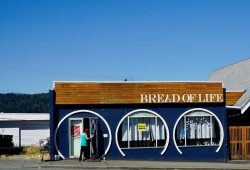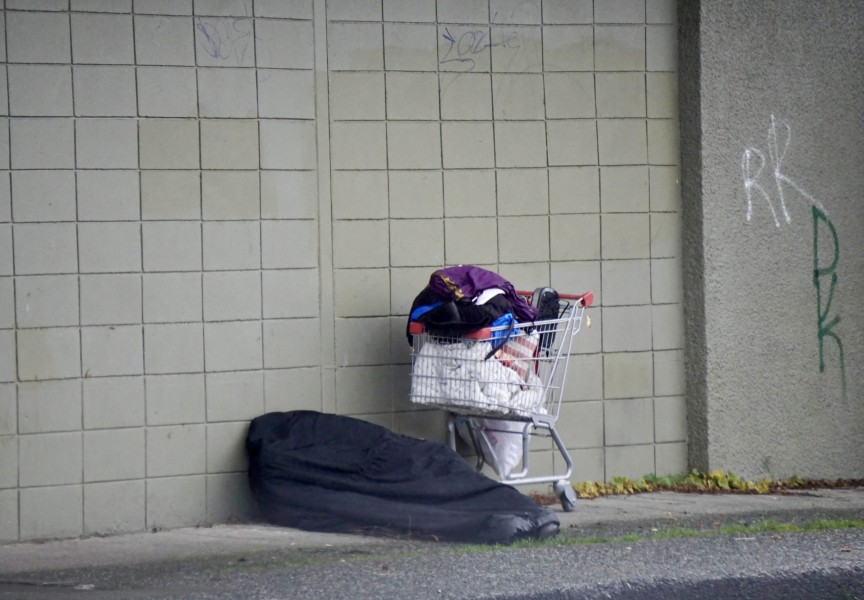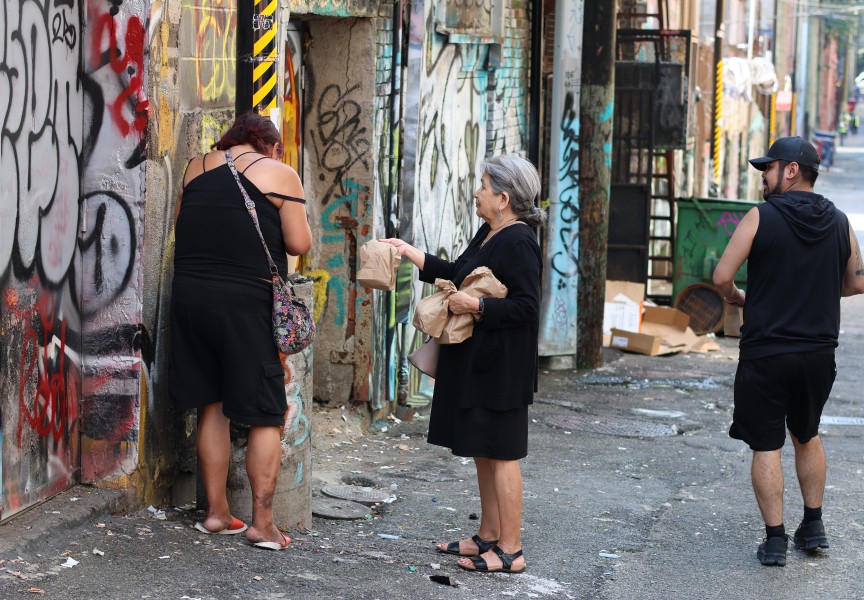With snow on the mountain tops and cold, wet nights chilling city streets, Vancouver Island’s most vulnerable will be seeking out a warm place to sleep.
The helping agencies of Vancouver Island’s urban centres are preparing to open their warming centres and extreme weather emergency shelter beds.
Funded by the provincial government, there will be 771 extreme-weather response (EWR) shelter spaces provided.
“These 771 spaces open overnight when a community issues an extreme-weather alert, such as during cold temperatures, snow or heavy rain,” reads a provincial statement.
There is no comprehensive listing of these extreme weather response shelters, as it is the communities that determine what conditions necessitate an alert in co-ordination with BC Housing.
To find information about EWR shelters, people are advised to search local municipal information sources, like city websites and social media pages, including BC Housing's site. Another source of information is local social service agencies and charitable organizations. EWR shelter spaces are available to be activated from Oct. 15, 2025, until April 15, 2026.
In Victoria, the island’s largest city, there are 1,749 homeless people, according to the 2025 Point in Time Count, conducted by the Homeless Services Association of British Columbia. The count took place in March 2025 and shows an increase in the number of people experiencing homelessness since 2023, when the number was 1,665.
The Victoria Native Friendship Centre is preparing to activate its additional support services for extreme weather events. Diego Enciso, VNFC’s Shelter Program manager, says they offer 50 overnight shelter spaces this season.
“Twenty-five year-round beds and 25 additional temporary winter beds funded through the provincial winter response program,” said Enciso.
Shelters in the province can be low barrier, meaning people that are difficult to house can use the space. These people may be intoxicated, have high-risk mental health issues, or they may have a pet or partner. Enciso says the VNFC operates a high-barrier shelter, meaning guests must meet certain expectations such as sobriety to ensure a safe environment for everyone.
Bread of Life permit extended
In Port Alberni the Bread of Life, run by Salvation Army, offers a soup kitchen, warming centre and 25 high-barrier beds. In extreme weather they open another 20 high-barrier beds. On Nov. 24 Port Alberni City Council met to decide whether they would approve the Bread of Life’s Temporary Use Permit. Without the permit, the Bread of Life would be forced to close the shelter portion of its operations.
Port Alberni also saw an increase in homelessness this year, according to the PiT Count. There are 180 people experiencing homelessness compared to 163 in 2023. Almost half of that number are Indigenous people who make up only 15 percent of the city’s population.
Located at 3130 Third Avenue in Port Alberni, the Bread of Life opened in 1983, starting out as food bank, drop-in centre, and soup kitchen. Today, it is a community hub where not only homeless people but also seniors and others gather to get warm, have a bite to eat and do crafts. Those in addictions or experiencing homelessness may go there to access services and support.
But concerns have been raised by some people and businesses in the neighborhood. They say that while they support the work that the Salvation Army does, they are not happy with the location due to its proximity to family homes and businesses.
At the City Council meeting, several people in attendance urged the elected officials to approve the permit, pointing out that users of the Bread of Life rely on it as a safe, warm place to gather, to eat and sleep. The Bread of Life may not take in those who are under the influence of intoxicants.
The Harbourview Apartments are next door, a known hub for illicit drug users. It is this property, said residents at the city council meeting, that is the source of unlawful behaviour in the area. They argued that if the shelter closed, more people would be on the street and sleeping in business doorways.
In the end, Port Alberni City Council approved the Temporary Use Permit for the Bread of Life for a period of three years. In that time, Salvation Army may apply to have the 3rd Avenue property rezoned as a permanent solution. For winter 2025/26, Port Alberni’s Bread of Life will have its 25 overnight shelter beds available with an additional 20 beds opened up in extreme weather events.
Campbell River expands temporary housing
Campbell River is one of two Vancouver Island communities that has seen a decrease in homelessness counts. The other seeing a reduction is Parksville and Qualicum, which went from 103 to 94 in 2025.
Campbell River went from 197 homeless people in 2023 to 174 in 2025. Over this period more than 40 new temporary housing units opened in the city. The city is planning to open an additional eight units before the end of the year.
Of those homeless people in the most recent count, 58 percent identified as Indigenous, while this designation makes up only 10 per cent of the city’s population.
Campbell River’s extreme weather planning includes the activation of a warming centre to support vulnerable residents during the winter season. Located at 401 11th Avenue, the Campbell River Warming Center provides hot drinks, snacks, and seating, but beds are not available.
The Evergreen Emergency Shelter in Campbell River offers 22 shelter beds year-round.
“The warming centre is activated when certain provincial criteria are met,” stated Evergreen. “The centre may be activated overnight at the city manager's discretion when Environment Canada forecasts temperatures of -4°C or lower, or when there is a forecast low of 0°C or colder within 24 hours with an Environment Canada weather warning.”
The operation of the warming centre is a collaborative effort involving Campbell River city staff, local social service organizations, volunteers, and contractors. Funding for the warming centre is provided by the province through Emergency Management Climate Readiness, with additional support from the city.
Most shelters and charities welcome donations of food, blankets, warm clothing like socks, gloves, coats, and hats. Personal hygiene supplies are also needed.
The Victoria Native Friendship Centre says anyone needing shelter in their city may call 250-886-1360.
While the number of shelters increase during extreme weather, there are never enough spaces.
“As in many communities across the region, demand for safe, warm shelter rises sharply during extreme weather,” said Diego Enciso of VNFC. “While our expanded winter capacity is helpful, there continues to be a need for more long-term, stable shelter options to meet community needs throughout the season.”
For more information about shelters and extreme weather resources for homeless people, type 211 on your web browser. This will bring you to a website that can connect you with emergency services in your community.








